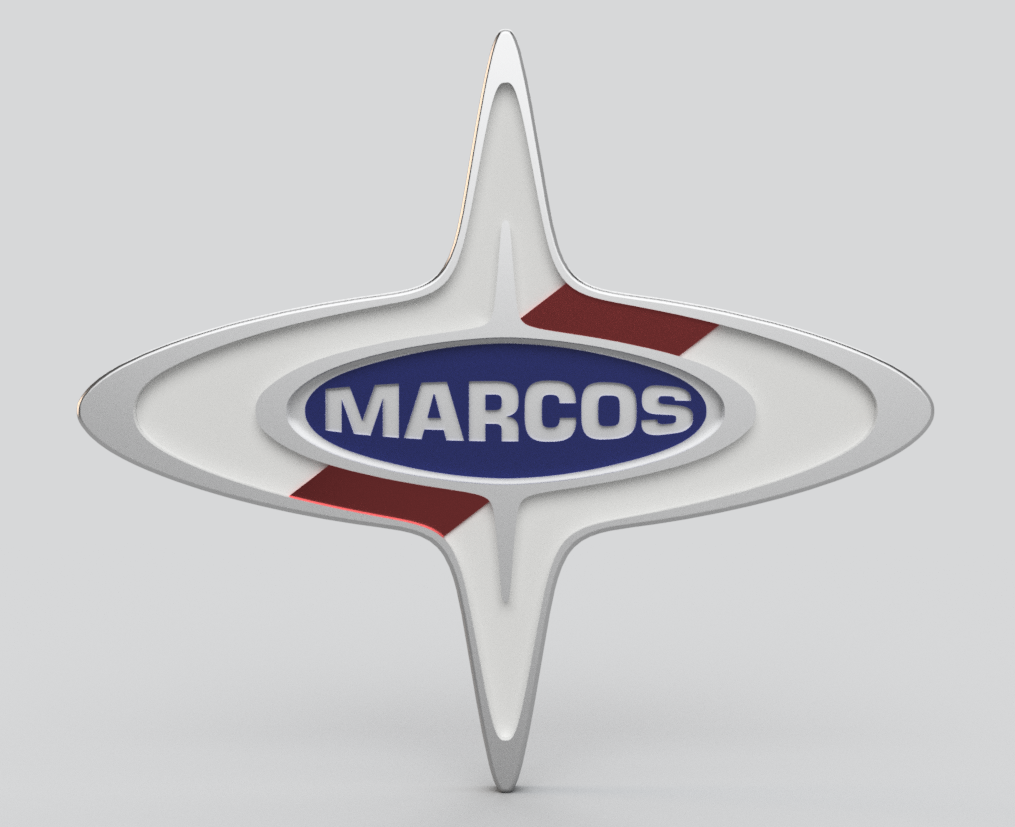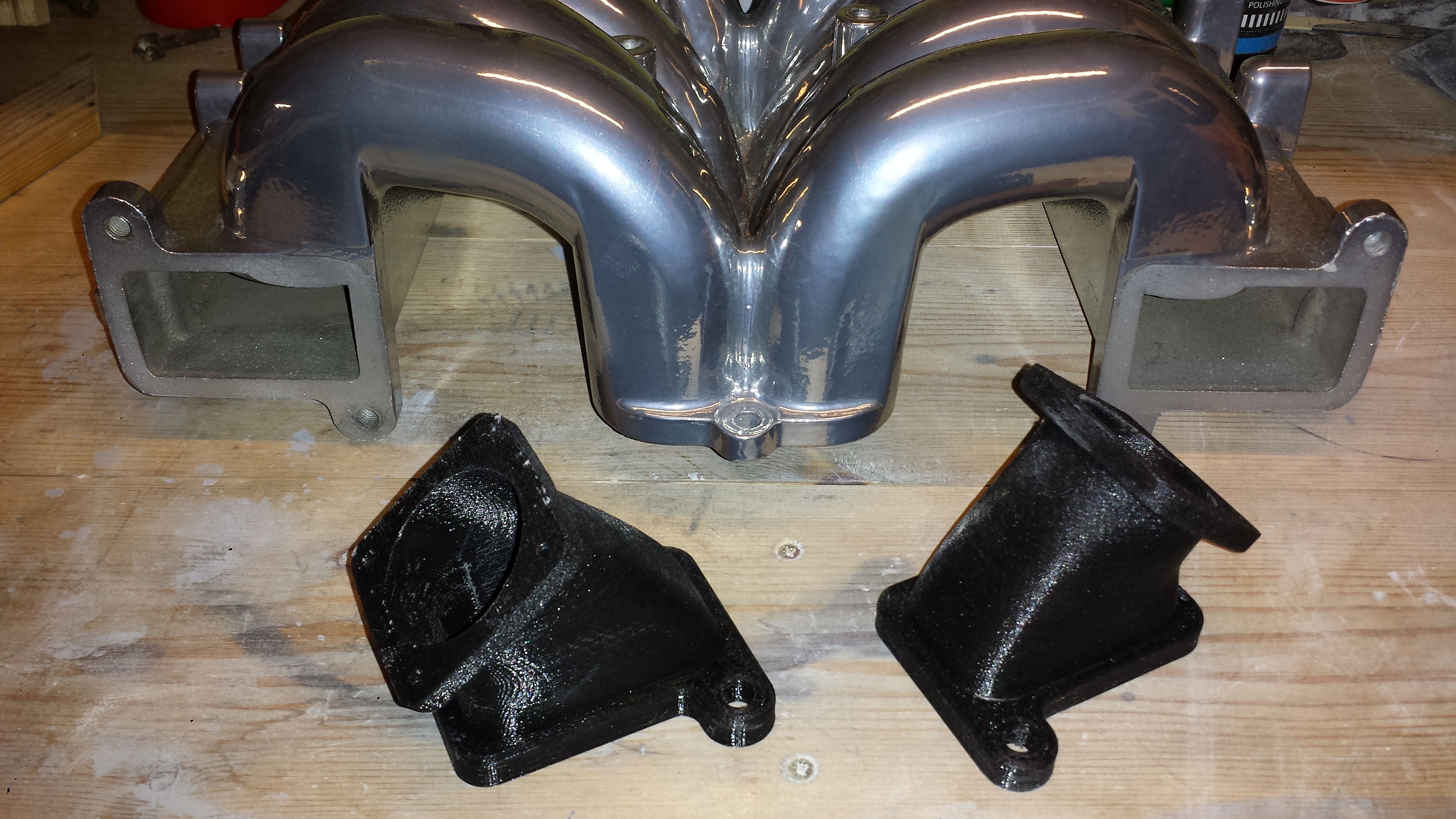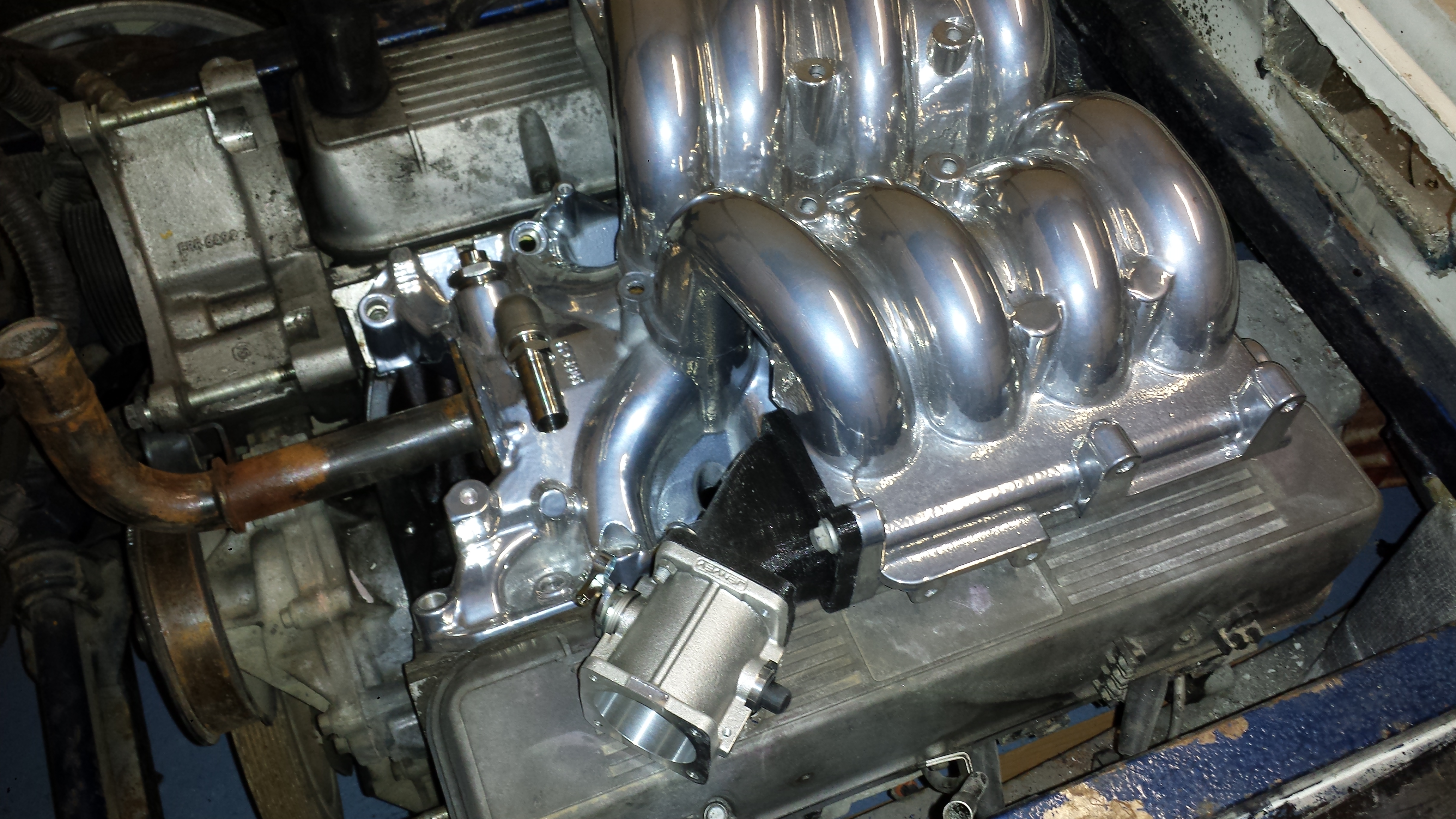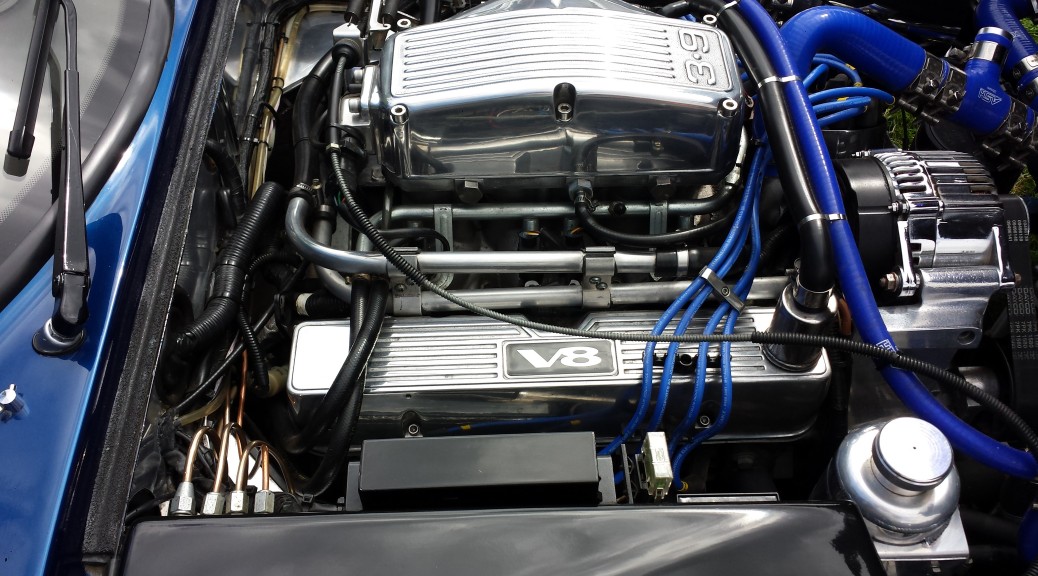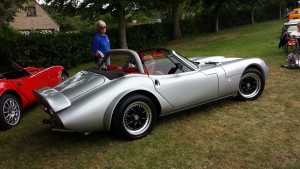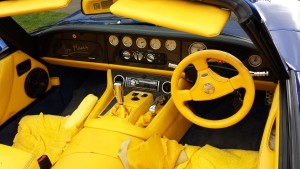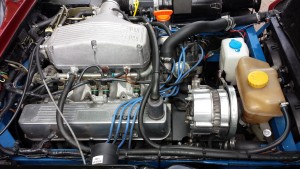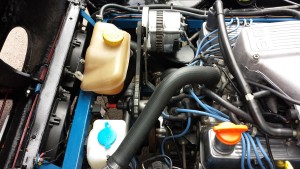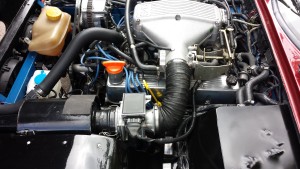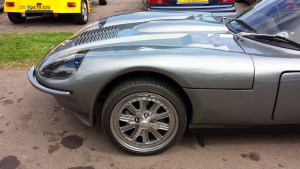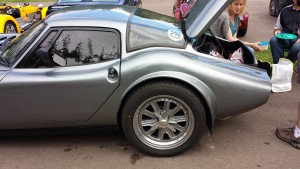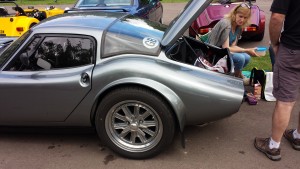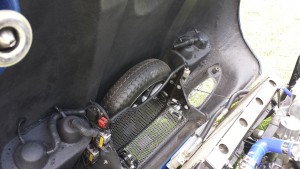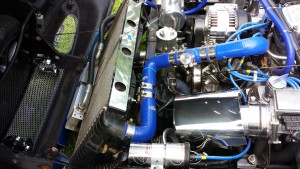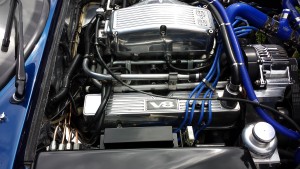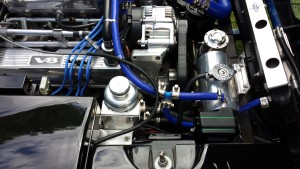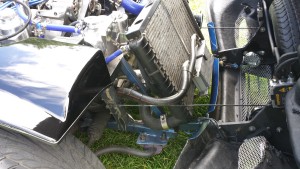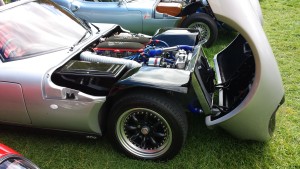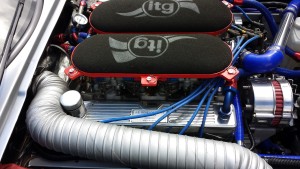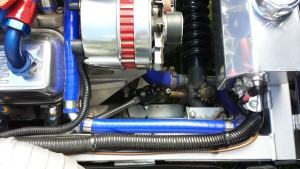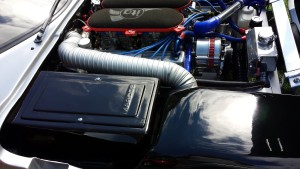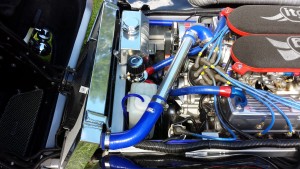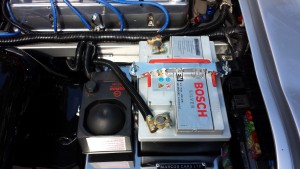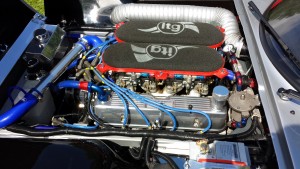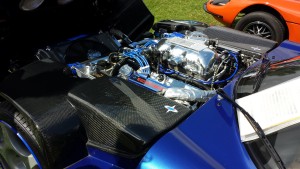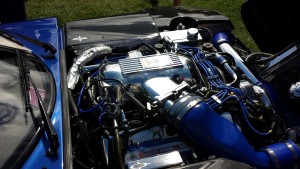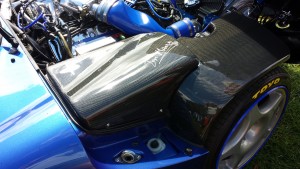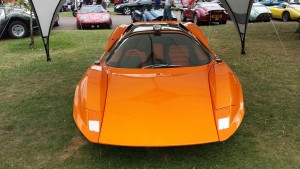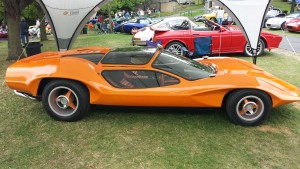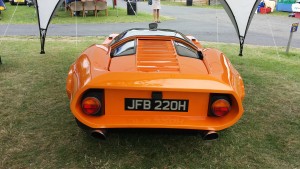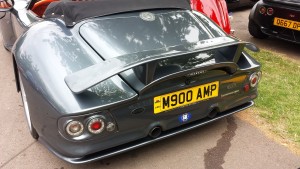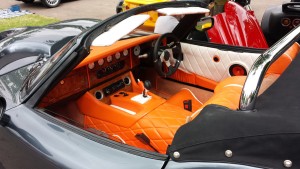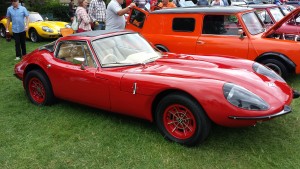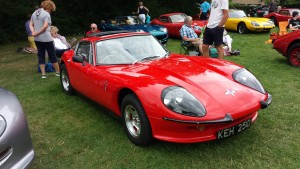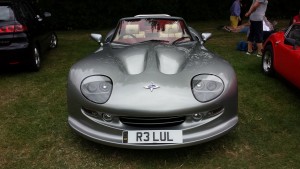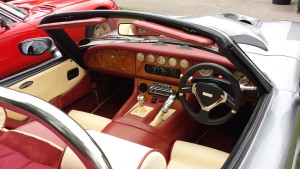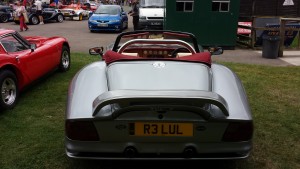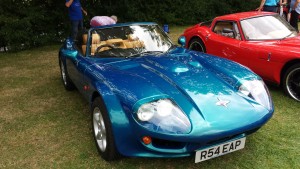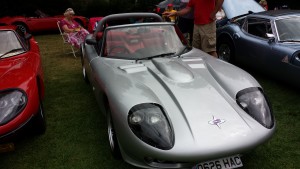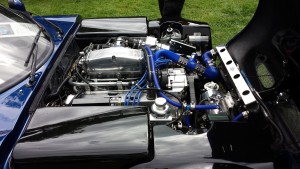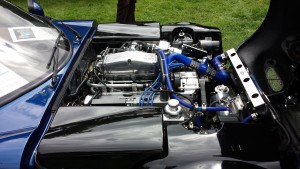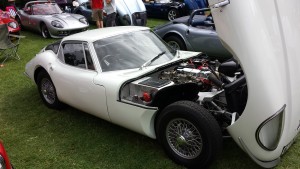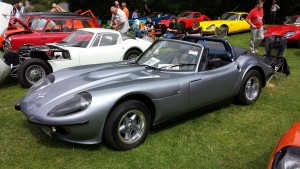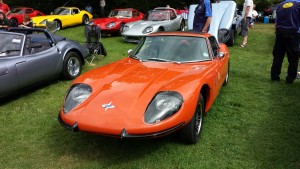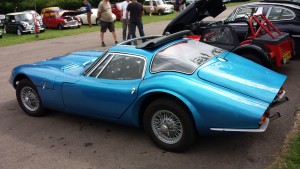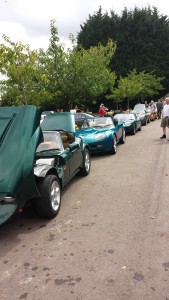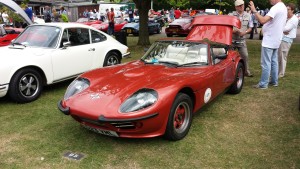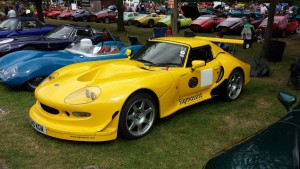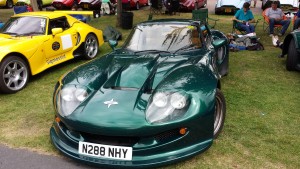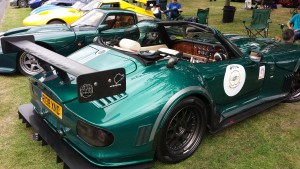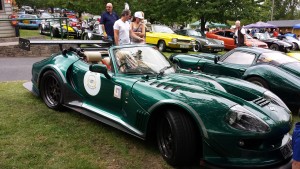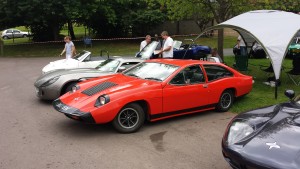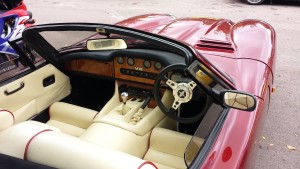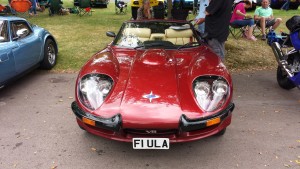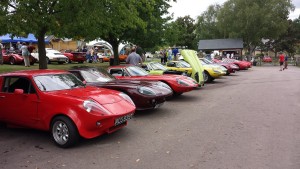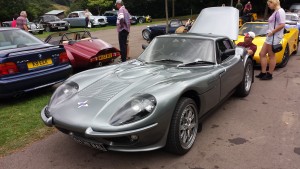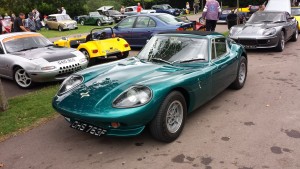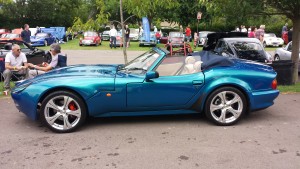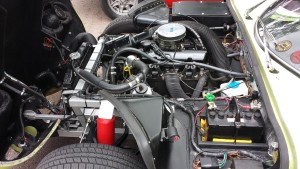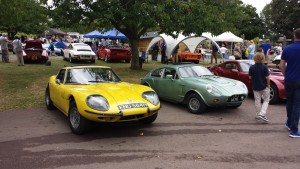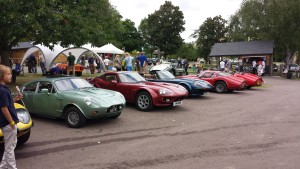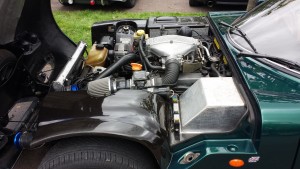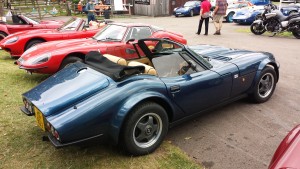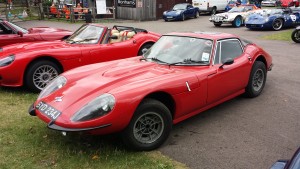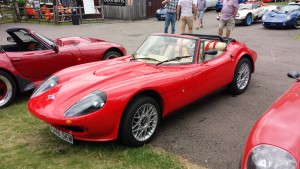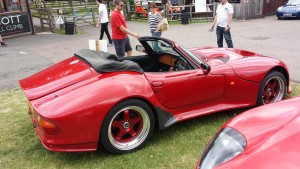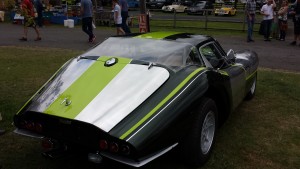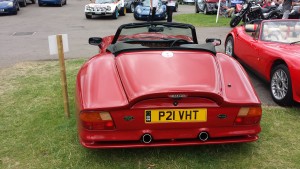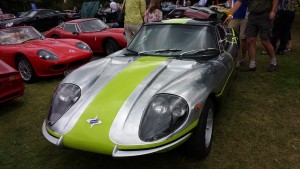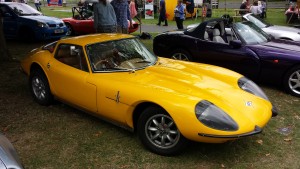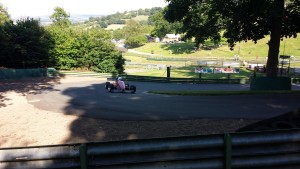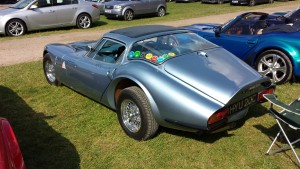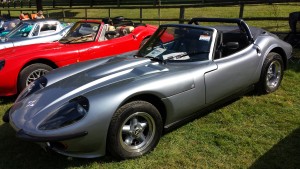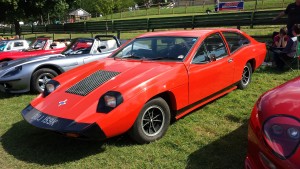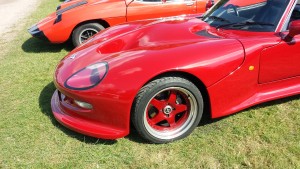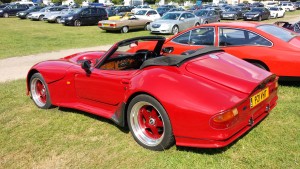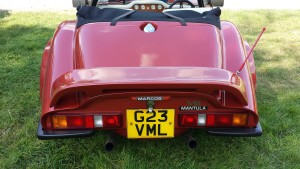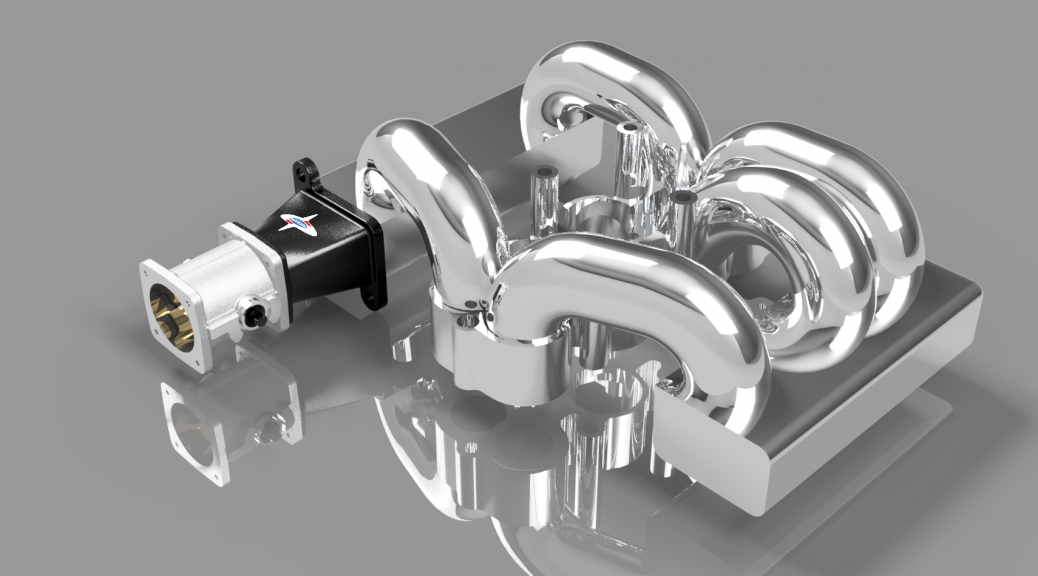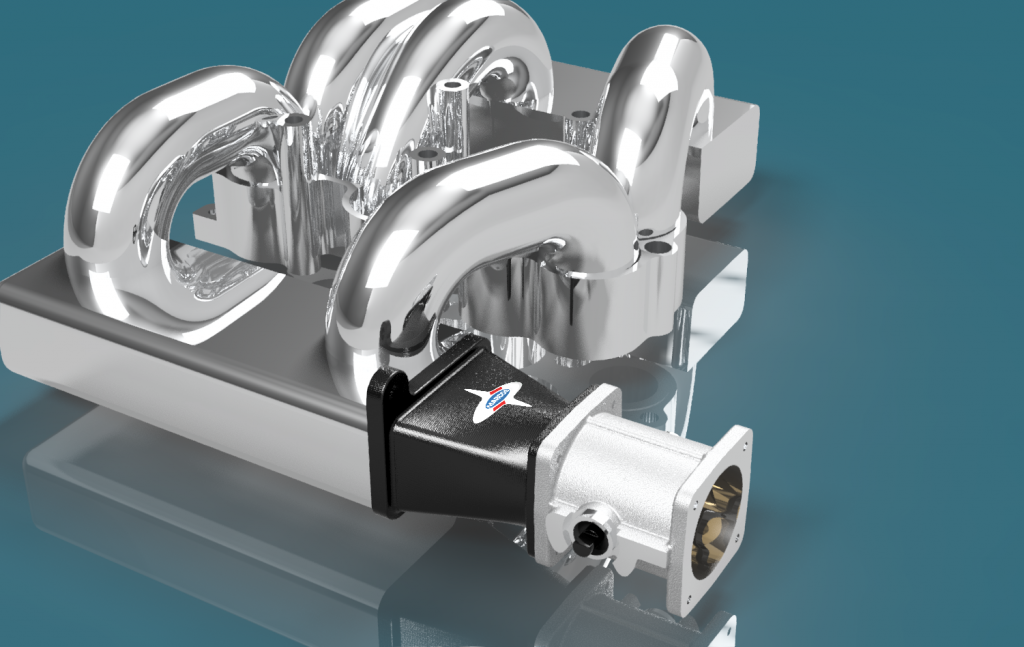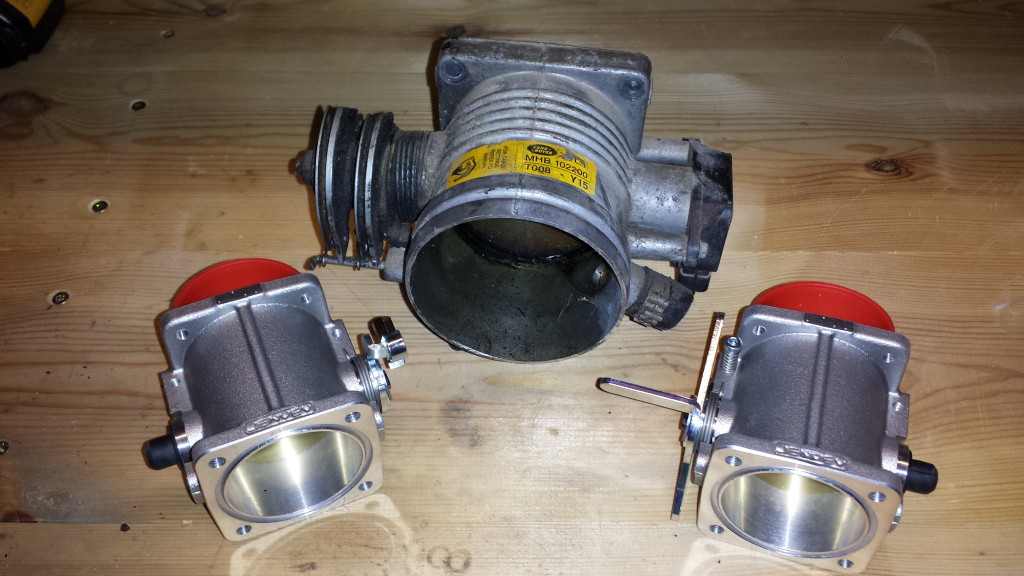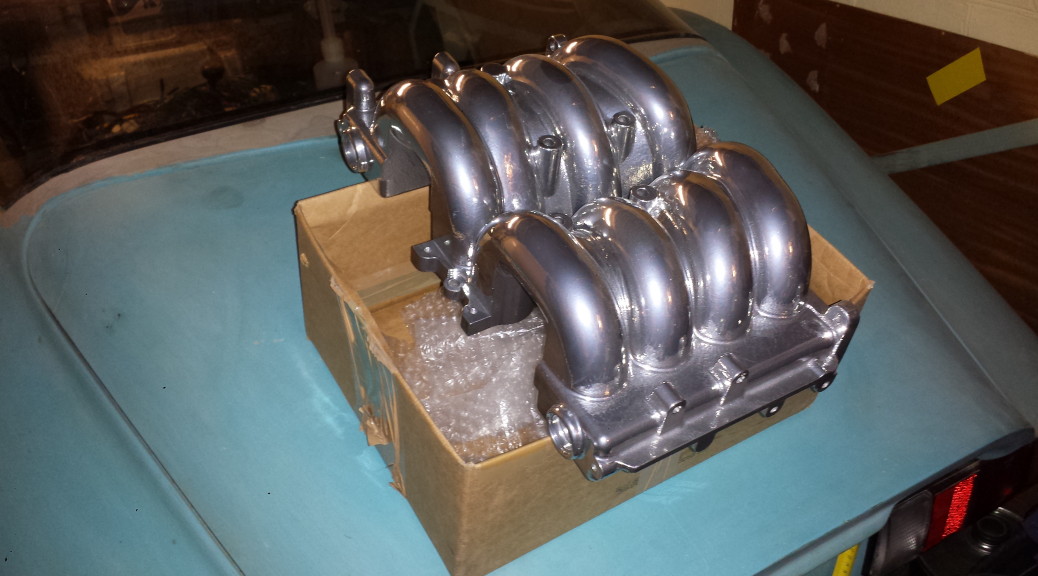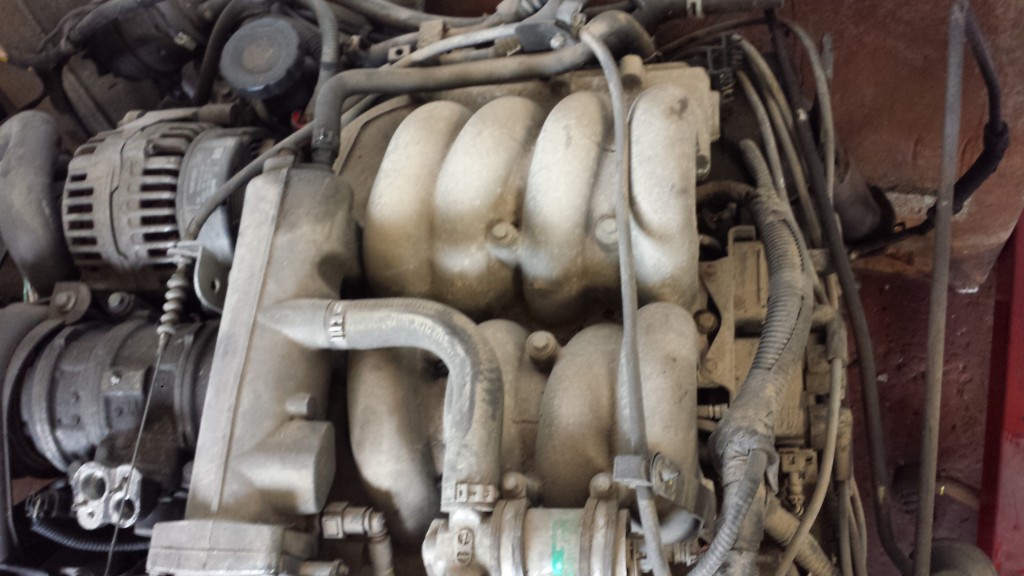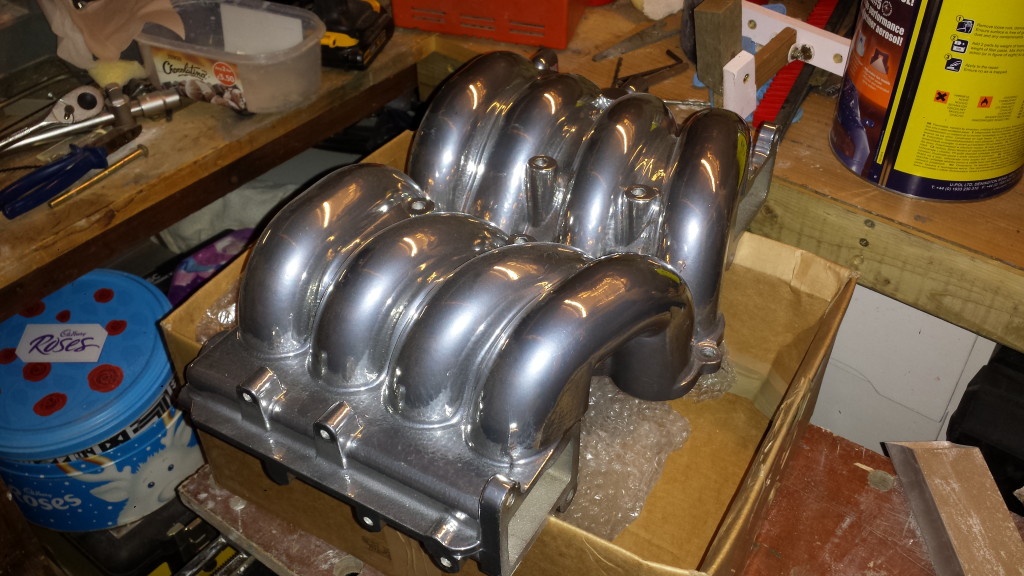Wow, it’s really been three months since I last worked on the Marcos! Sometimes other things get in the way. So it’s been months of DIY and decorating that has left the Mantula untouched. Hopefully I can get back to it in December. In the meantime here’s a picture…
3D printing
Today I collected the results of my experiment with 3D printed parts. In a previous post I showed how I was designing a revised inlet system using two new throttle bodies to replace the standard Range Rover part. The design has matured a little and the geometry is now fixed so it would be great to get the parts manufactured.
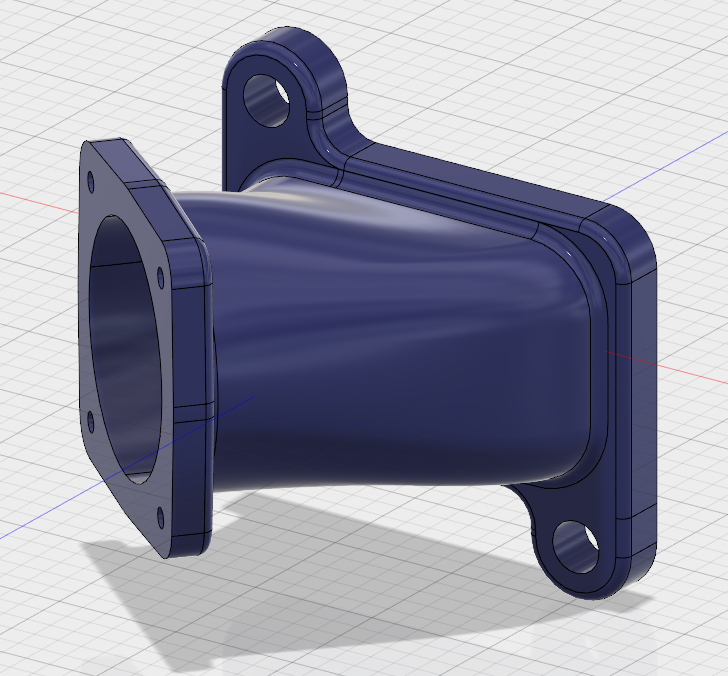
This is a screen capture from the Fusion 360 CAD program showing the adapters in place on the manifold.
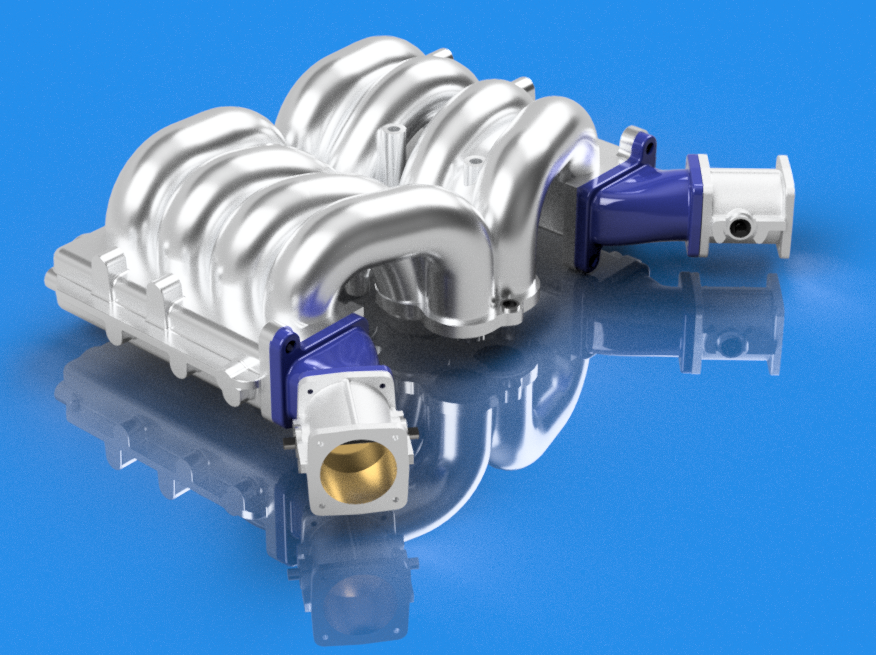
This is the result, printed here on the Isle of Wight by Island 3D Printing.
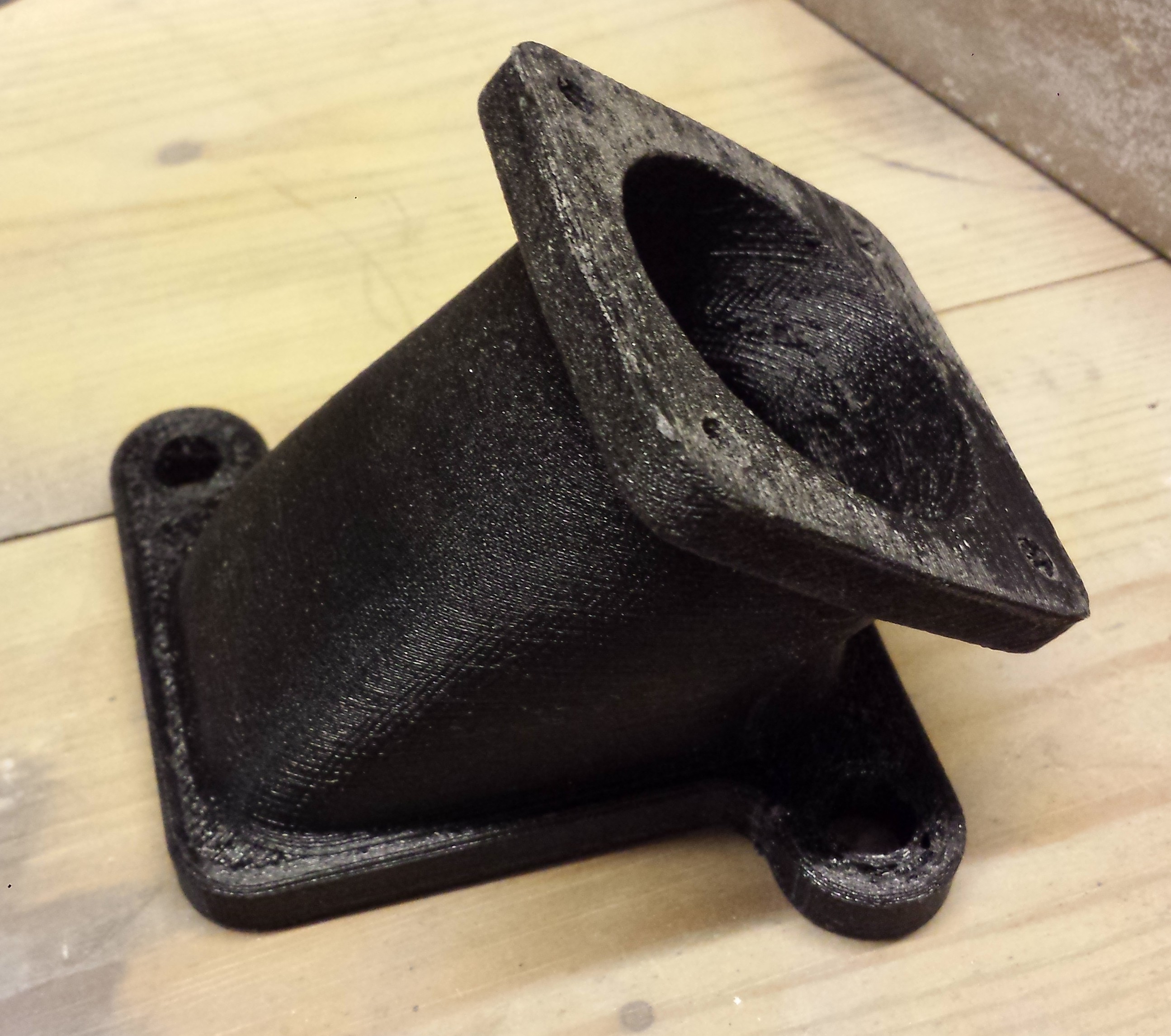
And here’s one of the adapters with a throttle body attached. The oil filler tube will have to be relocated before I can mount the other side.
Marcos Owner’s Club Rally 2015
What a great weekend that was! Here on the island I never get to see any other Marcos cars, so to see more than 50 in one place was a huge thrill! But it’s not just the cars, the owners are some of the nicest people you could hope to meet.
The venue is rather special too…
Here’s a random selection of pictures from the event, not too bad for a mobile phone…
I’m still here!
Sorry that I’ve been so quiet for the last couple of months. Progress on the car has been minimal due to other commitments. While I’m out of the country often it been impossible to get anything done.
I’m sure you would prefer to see pictures of the Mantula, but nothing new to show yet. However time hasn’t been totally wasted as I prepare to design the changes for the inlet system.
Fusion 360
The image below shows the work-in-progress on two fronts. The first front is learning to use a 3D parametric CAD system. I chose Autodesk’s Fusion 360 Ultimate. It’s really easy to learn, has an appropriate feature set and is affordable. For any ‘hobbyist’ it is free, at least for now… Better even than that it’s a joy to use. I think I’m becoming addicted.
Second front is the design of the inlet system.
The model still has a long way to go, but I think it’s worth the effort. Drawing the plenum has been a real challenge due to its totally asymmetric, organic design and overall complexity. As you can see I still have three more inlet runners to model, plus all of the fixing points.
The next part is the black mounting adapter with the Marcos logo. This will be 3D printed once the final design has been fixed. The current version needs some rework for clearance. Of course I will only know the effect on performance once I get to run the engine.
The last part shows one of the Jenvey 48mm throttle bodies. This has been modelled to 0.01 mm accuracy to ensure that the throttle linkage works first time. A really great feature of Fusion 360 is the ability to design joints that are limited to a realistic range of movement. So far I have the throttle opening the correct 83 degrees. This will be eventually joined to the main link mechanism, again with accurate movement limits.
For the next few weeks I will be completing this design work. Then I’ll send the CAD files to a local machine shop for manufacture.
Jenvey throttle bodies
As mentioned above I’m going to use the excellent Jenvey throttle bodies to replace the original Range Rover item. Here’s a comparison.
Two smaller throttles should give better response than a single large throttle. I can’t wait to find out!
Shiny
Sometimes it’s nice to see a part of the car looking good even when everything else still looks rough. That was the reason for getting the top half of the inlet manifold powder coated in chrome effect.
Before and after…
I think it looks pretty good, so thanks to Bret at Vectis Powder Coating for a job well done.
The lower half of the manifold is being machined by SeaTek Engineering in Cowes. This will re-align the water outlet to take a more direct route to the heater matrix.
Back on track
You may wonder why I’m putting so much effort into the design of an air conditioning system when there is so much to be done to get the engine re-configured and running. Maybe I’ve asked myself that question too, but it has to be the right way to go. Based on the tales of stuffy, overheated Marcos interiors I know that I would hate driving in those conditions. I’m not a lover of excessive heat, anything over about 28 deg C I find uncomfortable. Also I want this Mantula to be a real GT car for long distances, not just short sprints.
Clearly that leaves me with three options, a conversion to soft-top, a Webasto type sunroof or a really powerful air conditioning system. I couldn’t go the soft top route because I just don’t want to lose the coupe body shape. Maybe the Webasto would be quite nice, but would it really keep me cool with all of that engine heat? That leaves the air conditioning as the way ahead.
The design of the a/c system has now been decided, a double blower will force the filtered incoming air through a large evaporator to be cooled and dried. The air then flows through the heater section where an adjustable gate directs the flow through the heater matrix or the bypass duct. From there it cools or heats the cabin via electronically controlled valves.
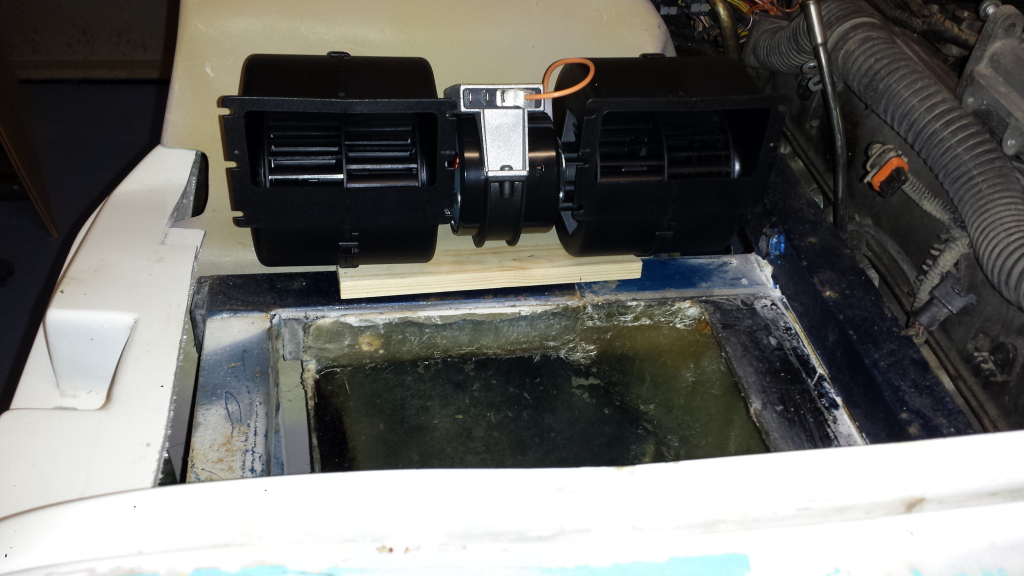
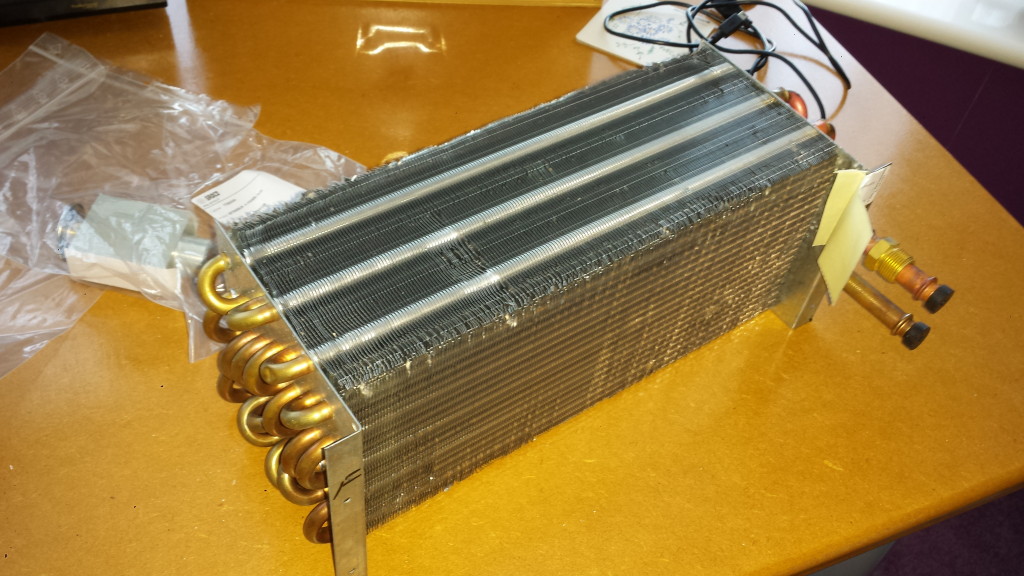
The remainder of the system comprises the engine mounted compressor the condenser and the receiver/drier. All of these parts are to Ranger Rover spec or higher.
From my calculations the system should be more than capable of keeping the tiny Marcos cabin cool even on the warmest days. I’ll also use some Zircotec flexible ceramic heat shielding to prevent heat soak.
Just to make the whole thing even more complicated this will be a real climate control system with temperature, sunlight and humidity sensors. All vents, the compressor clutch and the blower motor will be controlled by an Arduino processor.
Who said this would be easy?
A long time since my last update. Not so much progress as I’ve been working in Paris for three of the last four weeks. The work on the pattern for the air con system has had a couple of setbacks due to the way I constructed the shaped top part. The PU foam went soft after application of the filler. So although I had the shape I wanted, it was too fragile to finish to my satisfaction. I think I have been able to repair the soft areas now, but it wasted a lot of time and effort.
The design is also evolving. The removable lid will be fixed at the sides rather than the top. Hopefully that change will make it simple to fit the blower, evaporator and matrix.
It’s important to give the air an unrestricted flow into the air con box. The initial plan was to connect some 100mm hose, but that won’t be ideal due to limited space. The engine air inlet also has to occupy a the same space. My next crazy idea is to build a double-skinned top to the near-side inner wing and route the air through that… Again this will all be done in carbon-fibre.
Uni-Mould kit
The mould making materials arrived this week. I’m using the large Uni-Mould starter kit from Easy Composites. This includes a huge 25kg drum of tooling resin along with gel-coat, bonding resin and all the glass fibre mat I will ever need. With that and all of the parts I’ve been accumulating I’ve almost run out of space to actually make the moulds!
That’s all for this instalment. It will be a while before I can press-on with the mould making.
MDF, foam and filler – part 2
Happy New Year to you all. 2015 will be an important year for the Mantula. The initial strip-down and preparation will take a few more months, but then things will begin to move forward at a faster pace.
In the meantime I will continue with some of the various design tasks. In my last post I started work on the A/C housing pattern. This work continued over the Christmas break. The general shape is almost complete, and it’s looking just as I intended – which is a nice surprise!
The underside is shaped to sit on the chassis rails and clear the foot-well tub which sits slightly higher on my car.
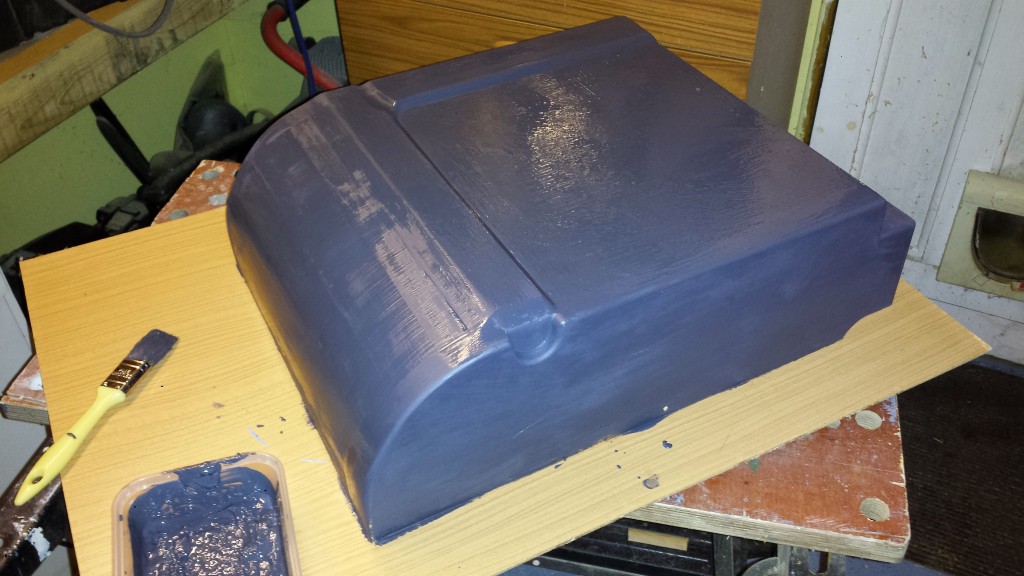
The semi-circular indent is there to clear the mounting point for the left-hand steering Rose joint (Heim joint). Despite carefully measuring the MEKP catalyst it still started to cure before I had finished applying all over, hence the rather rough finish. No problem though as this primer is easy to sand smooth.
For the top surface I wanted to follow the internal shape of the bonnet. I won’t go into detail on how I achieved this using expanding foam. To be honest it was a messy disaster, but we live and learn…
However it was recoverable so I now have this shape…
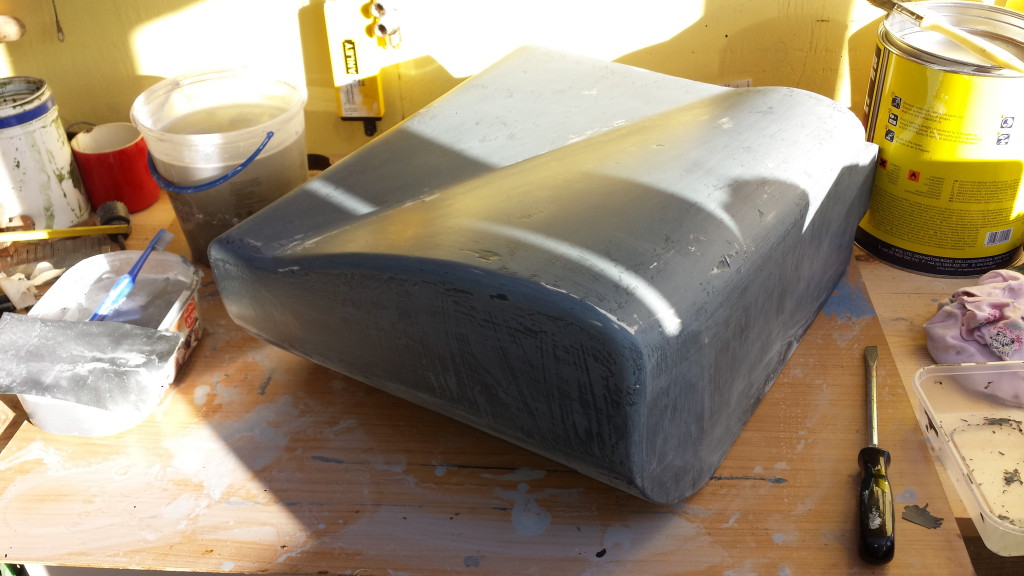
This is close to completion, but it still needs to have the air inlet moulded into the front. Clearly there are still imperfections in the surface, but these will soon be filled.
MDF, foam and filler – part 1
I’ve started making the pattern for the air conditioning housing. It a box made of 25mm MDF that is built in position on the car. It probably didn’t need to be that thick as it makes for a very heavy construction, but it’s solid and should remain in shape as its gets worked into its final form. It also has the advantage of allowing deep features to be carved into the surface.
While the base of the box has to fit to the chassis steelwork, the upper section can be more stylish. Of course it needs to fit under the bonnet, but that should help to define the general shape.
At the front of the box the idea was to give it the rounded profile similar to the a Marcos pedal box. With that in mind I transferred the curve from the inner wing onto the box side. I adjusted this to be little more uniform and to give some clearance. Then I transferred the same curve to the outside. With both parts cut it I assembled the box. So far it’s all looking good.
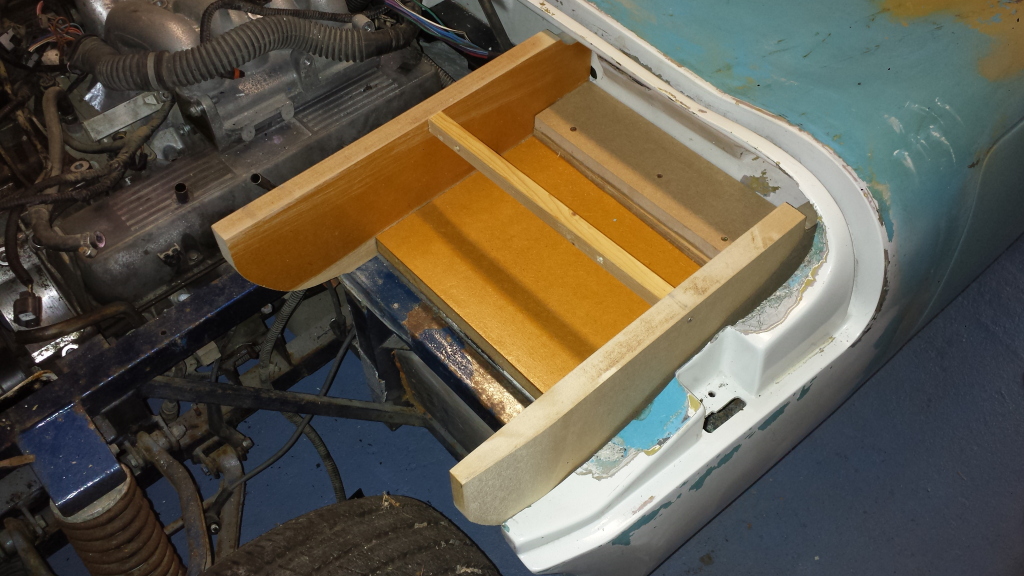
That will never fit…
Once again the “informal” Marcos approach to mould making has caught me out. The inner wing profile is all over the place. The curve fits on the inside edge but is a least 20 mm out on the outside. That means the inner wing does not fit. In the picture below you can see the gap between the inner wing and the chassis.
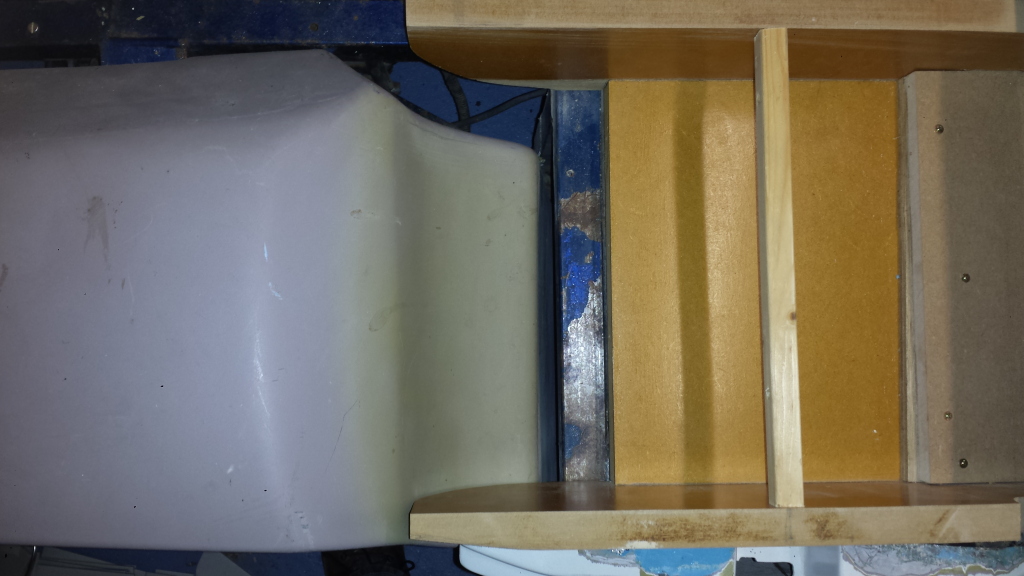
How do I handle this? Well there are three options:
- Trim the outside profile by 20mm to make it fit the existing inner wing. The would make the a/c box asymmetric, but would fit any Marcos Mantula.
- Trim both profiles to make it fit and symmetrical. This may emphasise the asymmetry of the inner wing, but would also fit other installations. Space for the blower would be compromised.
- Re-design the inner wing. I was going to have to do a lot of work in this area anyway. The original wings are a very poor fit in any case.
In the the end it was an easy choice I’m going with option 3. This also has the benefit of giving the blower enough room for optimum airflow.
More in the next exciting instalment…
Systems design
Progress has been very slow over the past few weeks. Travelling away for work most weeks in Paris and talking at a conference in Bristol means that come the weekends when I’ve finished the backlog of DIY jobs there’s very little time left for the Mantula. 🙁
However there’s always a chance to do something. When I’m away from home I can design the systems layout and do a fair amount of research too.
There is an immense urge to strip the whole car down and get the really exciting big jobs done. IRS conversion for example. But I’m forcing myself to take it slowly and plan everything properly now while I can. You see, the old Rover 3.5 V8 installation was quite simple; no oil cooler, a/c or fuel injection.
The really complex part now is the routeing of all of the pipework, ducting and wiring loom branches. To say that the original Range Rover engine installation is busy is a major understatement. I will have to find alternative or modified locations for all of this:
- Plumbing for the oil cooler,
- Plumbing for the air-conditioning,
- Plumbing for the engine coolant system,
- Throttle linkages to the new Jenvey throttle bodies.
- Twin ducts for the engine air intakes,
- Single, large-bore air intake for the air-conditioning,
- New engine wiring loom,
- New engine management system,
- New dual-circuit brake, clutch and throttle layout along with a new pedal carriage and pedal box/housing.
What should I do first?
For one very simple reason I’ve chosen the air-conditioning system as my first real design task. The reason? Well, it’s the only part of the engine bay that’s easy to work on right now! But it’s also a real challenge too. I want to prove that it is possible to fit a really worthwhile climate control system in a Marcos.
Most of the design effort will go into the air-con housing that will sit over the passenger foot well. This will contain the blower fan, evaporator and heater matrix. There will also be servo controlled flaps for hot/cold air blend and fresh/recycled air.
I will be following conventional a/c system configuration where all of the incoming fresh or recycled air will pass through the evaporator. This gives the benefit of working as a dehumidifier even if the air has to also pass through heater.
So far I have the blower with the evaporator due to arrive tomorrow. Both parts have been supplied by Adam at T7 Designs – excellent service and a pleasure to do business with.
For the a/c housing box I will be trying something new, at least for me. It’s going to be a carbon fibre part using resin infusion. If you haven’t seen this process yet here’s a video by the helpful people at Easy Composites…
Before I can get there of course, I need to create a mould and before that a ‘plug’. I’ll post some pictures of my progress as I go. So far I have just cut out one side of the box from MDF. The top of the plug box will be built up from expanded foam so that it conforms to the inside shape of the bonnet. This will be smoothed out using polyester filler to give the final shape. After that it needs a perfect glossy finish which is built up using Pattern Coat Primer followed by Pattern-Coat Hi Gloss finish.
After that I will create the three part mould (another long process). Finally I can create the actual part in beautiful carbon fibre. A lot of work for a simple box, sure, but, if it all works well maybe I’ll put it into production.
Other parts on my Carbon Fibre list are:
- Pedal Box,
- Inner front wings,
- Inlet manifolds,
- Fresh air inlet duct,
- Parts of the new dashboard,
- Battery box
- Bonnet hinge/support structure (you wouldn’t believe how rough this is, a real botched job on my car).
